Get in Touch
Email Address
hello@creativitek.com
Phone Number
+61 423 493 386
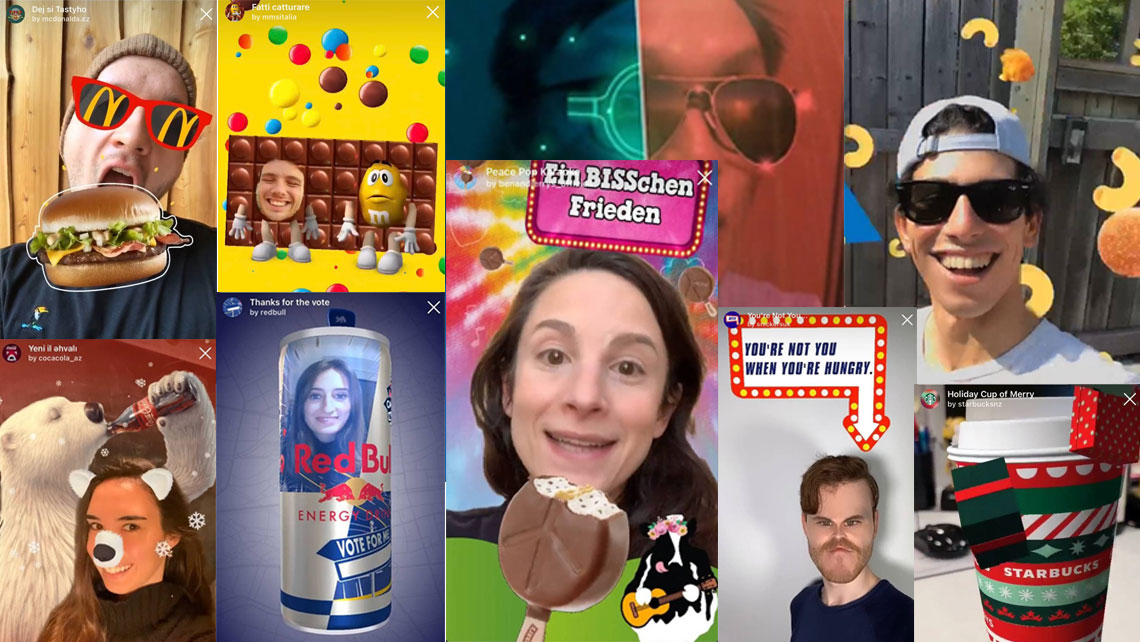
Augmented reality (AR) effects, filters or lenses have become a powerful marketing and engagement tool for many brands. AR effects are shareable by nature and are perfect for viral and gamified marketing. They help brands and businesses attract more attention on social media, spread their message in a unique and fun way and engage their followers. As augmented reality technology is improving rapidly and smartphones are becoming more powerful, we expect more and more creative and magical AR effects to be created and provided by brands.
We did a bit of research in February/March 2021 to find how large, international food and beverage brands use Instagram and Facebook effects to entertain and engage their target audience. Below is an overview of different AR effects we found sorted mainly into categories introduced by Spark AR Studio (Facebook’s AR platform). However, some categories (e.g., random effects) may fit under other categories, and some AR effects may fit under several categories. If you are reading this blog on your smartphone, you can click on the links and try the AR effects. Make sure the sound is on. Just note that for target tracker effects, you need the target image to try the effect.
Random effects: In this kind of effect, the user taps on the screen and they are randomly allocated a food or mascot character. The viral effect “which Disney character are you?” turned this kind of effect into a trend in early 2020 and they are now one of the most used effects by food and beverage brands. As an example, Kellogg’s created the effect “Mascot Matcher” which asks “which cereal character are you?” to entertain and engage their audience. However, most of the effects created by brands lack creativity. The same basic thing happens in most of the effects and just the names and the images change. It looks like many brands have just tried to jump on the bandwagon of AR effect trends, forgetting all about the importance of novelty and creativity for a successful marketing campaign. A good example of a more creative random effect is the one created by Buffalo Wild Wings called “Why Am I Single?” This effect is not about their products or even their mascot characters, instead asking a very general question that people are interested in answering in a fun way. It randomly selects an answer for the user and they can share their photo/video taken in a Buffalo Wild Wings branded photo frame.

Appearance or selfie effects: Appearance filters add virtual items to the mobile user’s face and alter their appearance. Appearance effects are one of the most commonly used types of AR effects in all industries and business sectors. Even in many other types of AR effects (e.g., games, immersive effects), the AR creators add some virtual items to your face to enrich the experience and make it even more enjoyable. KFC (Trinidad and Tobago) created the “Di Chick’n Robber” effect with some simple but interesting visual effects to allow the mobile users to mess with their appearance. And they have a funny demo video for this effect on Instagram.
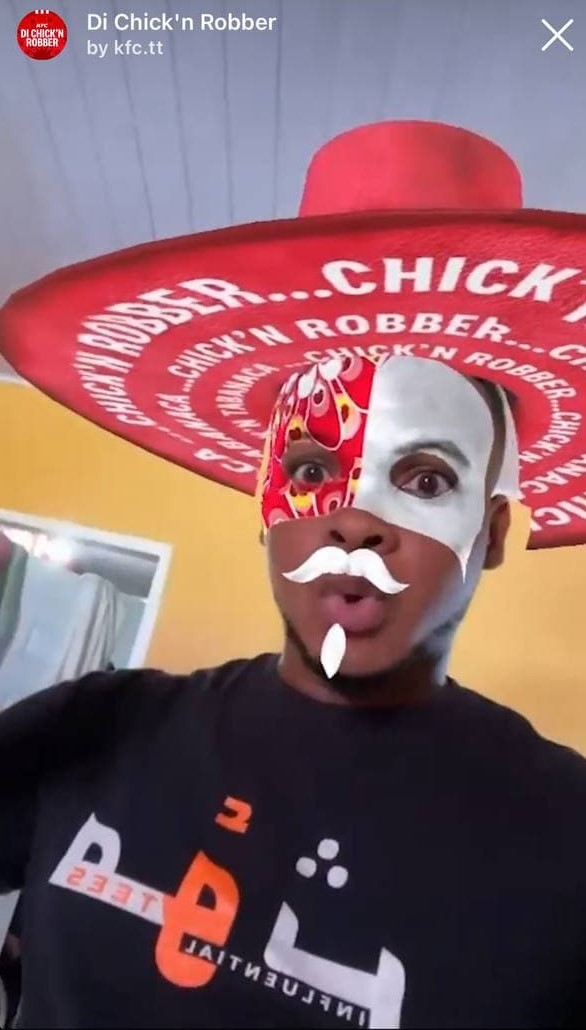
Event effects: These effects help people celebrate holidays, festivals, and other events. Many brands have used these kinds of effects as part of their festive season campaign. For example, Coca Cola (Brasil) turns you into a Santa truck driver. Kinder’s (Italy) effect allows you to become a Befana (the good witch of Christmas). Pepsi Max (UK) created the effect “Christmas Refresh” as part of their Christmas 2020 campaign. This effect turns you into a Santa rap artist with funny red and blue branded lips who is encouraging people to try something new during festive season.
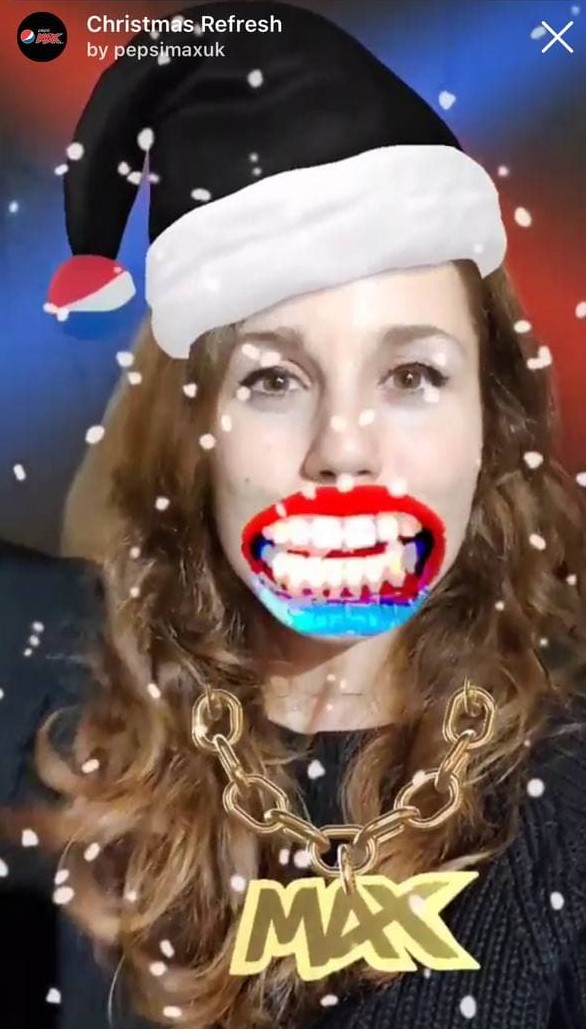
Surroundings: These effects enable mobile users to replace their background, or to add virtual objects, photo frames, animations, lighting and more to their surrounding environment. These kinds of effects require the user to use the front-facing camera on their smartphones, like when you take a selfie. Many brands have used this type of effect in creative ways. For example, McDonalds (Czech Republic) allows you to open your mouth and eat one of their burgers while you’re wearing branded McDonalds glasses on your eyes. The sound effects are a great part of this AR experience. Burger King (Canada) created an effect in which you see their foods falling down from the sky behind you whilst the Burger King (India) filter allows you to take a photo with barbeque grill plates and fire. Magnum’s (Kazakhstan) effect adds a funny animated banana character next to your face saying cute and funny things. Another example of this type of effect is Coca Cola’s (Azerbaijan) effect that allows you to mess with your face while there is polar bear drinking a bottle of coke in the background and snow falling.

World AR: These effects enable mobile users to place virtual objects into people’s surroundings, using the rear phone camera. For example, Pepsi Max’s (Spain) effect allows you to place a can of Pepsi Max (with multiple designs) just in front of yourself on a table or on the floor and interact with it. You can resize, move around, take a photo or record a video with it.
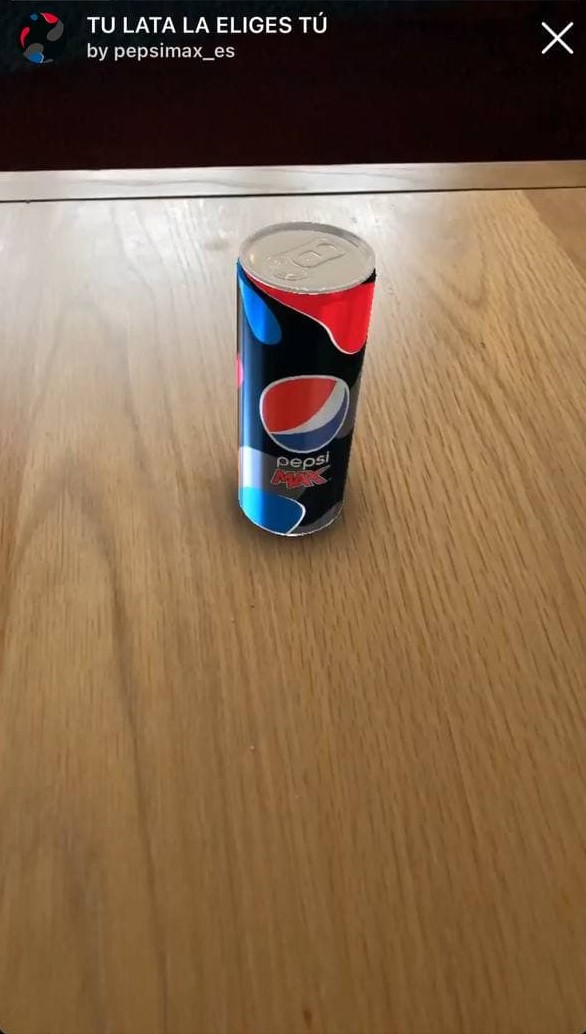
Immersive effects: These kinds of effects immerse the mobile user into a story or scene. For example, M&M’s (Italy) effect allows you to eat one of their chocolate bars and it then becomes like an immersive experience at the end, where you become part of the product in a funny way. The finished effect encourages many mobile users to share their photos/videos on social media. Or Red Bull created an effect for their followers that puts their face on a can of Red Bull, and when they open their mouth they hear the sound of the can opening with some beautiful visual effects. Another example is Ben & Jerry’s (Germany) effect called “Peace Pop Karaoke”. The effect puts you in a beautiful virtual environment where you’re singing with a chocolate covered ice cream bar as your microphone.

Moods effects: These effects help people express how they feel or how their feelings change when they eat something. Nutella (Italy) created a beautiful effect for “World Nutella Day”, where you can smile to turn your background into more attractive and beautiful backgrounds. Or the Snickers (UK) filter which distorts your face into an angry grimace and says “you’re not you when you’re hungry”. Then it asks you to open your mouth and a Snickers chocolate appears just next to your mouth and your face looks happier and virtual confetti is released.

Target tracker effects: In this kind of effect, a pre-determined target image (for example an image on the packaging) acts as a trigger to enable the user to use the effect. For example, Starbucks created an effect that allows mobile users to point the camera at one of their holiday cups and watch as the magic unfolds. They can capture photos or video of the experience and share it to their Instagram story. Pizza Hut’s (Indonesia) effect asks the mobile users to scan an image to see animated characters and pop-up texts on its FUN BOX. Another example of this type of effect would be Domino’s Pizza (Singapore). The effect is triggered by pointing the camera at the pizza box. When the image is scanned, the user needs to switch their camera to see how their face and surroundings change where half the screen is a neon night scene, and the other half is the day sunny scene, representing that Domino’s pizza can be ordered at any time, day or night.
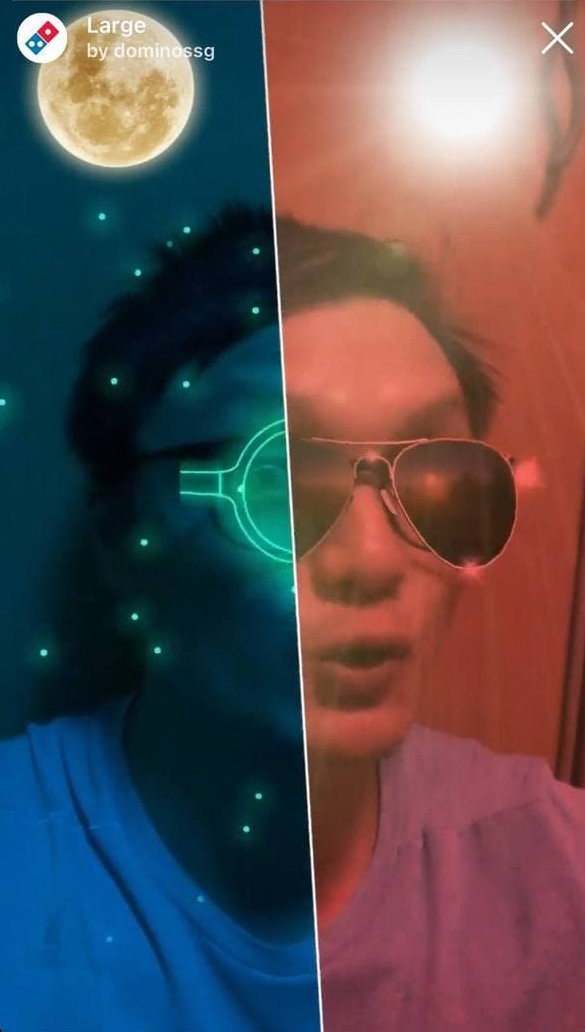
Interactive games and quizzes: Social media AR mini games and quizzes are a great tool for brands to entertain and engage their target audience for a longer period of time. In most of the social media AR games, the mobile users need to use the front-facing camera and blink their eyes, open their mouth, tilt their head from side to side or move it back or forward to play longer and get higher scores. In Red Bull’s game effect called “Flying Bull”, you need to move your head back and forward to collect the cans of Red Bull and golden objects to get a higher score. Or in McDonald’s (Lebanon) game the player needs to blink their eyes to help a cartoon character jump over McDonald’s food products and get higher scores. From a visual point of view, the game has a simple environment but it still gives you the feelings of playing in a McDonald’s restaurant with big Ms and red and yellow colours.
